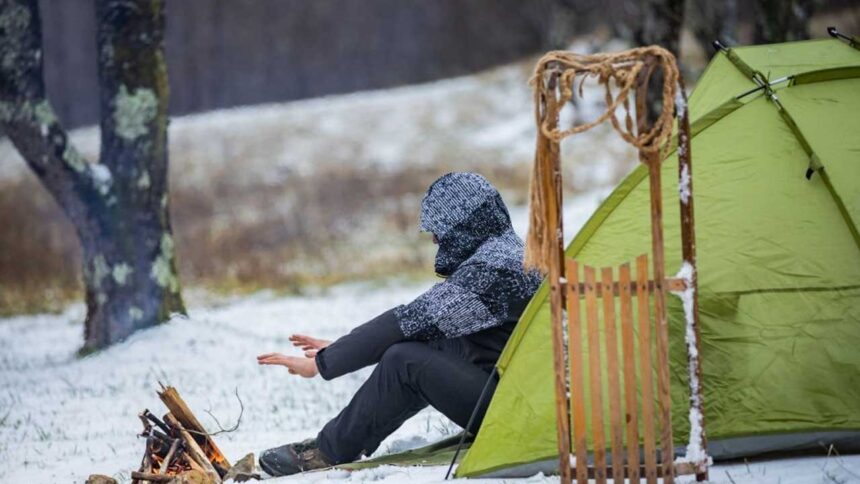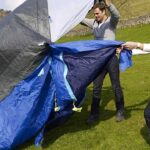The main function of survival shelters is to protect you from environmental hazards when you are out in the open and far from home. Extreme heat can cause you to have syncope or heat stroke. On the contrary, excessive cold causes hypothermia and frostbite. In swampy areas, you can be eaten by mosquitoes. And if you soak to the bone while you sleep, you can catch pneumonia, apart from the discomfort, the lack of rest, and the blow against your morale that this will entail.
Characteristics of circumstance shelters
Besides protecting you from the above elements, a good shelter will provide comfort, security, and psychological strength.
The type of shelter you build will depend on
- Where you are: you must adapt the type of refuge to the forest, the mountain, or more extreme situations, such as the jungle, the desert, or the polar zones.
- Your needs and the dangers you face: In some places, it is imperative for survival to protect yourself from the sun or the cold. In others, like the Arctic tundra in summer, you risk going crazy if you don’t have a mosquito net.
- The time you will stay in that place: If you will be there for a short time, it is not worth investing much energy in constructing a shelter.
- Tools that you have: Our tools, improvised or not, will limit the characteristics of our shelter. The absence of sharp tools will reduce our alternatives to natural refuges.
You should always include in your luggage at least one good pocket knife or hunting knife and a 2×2 or 3×3 meter plastic sheet ( tarp) or similar that occupies and weighs little and provides us with a waterproof roof. If weight doesn’t matter, include a small hatchet or machete.
Survival shelter location
You will look for a dry place as far as possible and sheltered from the wind, away from stagnant water or swamps to avoid being eaten by mosquitoes, although a nearby source or a small stream would be ideal.
To minimize the risks, you shouldn’t set up your camp on the banks of the rivers. I know it is idyllic to center in a place like this, and I have done it. But you can be surprised by a flood, even in sunny weather, due to the rupture of a naturally formed dam due to the accumulation of branches. That happened in 1996 at the Las Nieves campsite in Aragon, which was razed briefly. People died inside their vehicles and caravans, which were swept away by the force of the current. Now you know. The same can be said of dry riverbeds, which in a storm, can turn into torrents before you know it.
It is also inadvisable to camp under the trees due to the potential risk of a branch falling on us. I frequently break this rule because the trees protect me from dew. If you decide to do like me, ensure you don’t have dry branches that pose a risk to you. Also, avoid places with danger of rockfall or hazard of snow avalanches.
It is important to pay attention to the surroundings not to realize that we have an anthill or a hornet’s nest as neighbors once our construction is finished.
The shelter bed
The bedding is a fundamental part of the shelter. It must be soft, dry, horizontal, and hot (except in the desert, which will be cool). We will achieve this by choosing the location well (escape areas with humidity), removing the sticks and stones that may be on the ground, and isolating ourselves well from it with fallen leaves, ferns, clothing, etc.
Types of survival shelters
Any survival shelter that we use to set up our camp will correspond to one of these three types:
- Vehicles
- natural refuges
- makeshift shelters
Vehicles
If we find ourselves in a real survival situation due to having suffered an accident and our vehicle is still habitable, it can constitute a good refuge. Otherwise, let’s pay attention to the material it carries inside, which could serve us. Normally, the vehicles are poorly insulated and can become a fridge or an oven. Still, at least they will protect us from the wind and rain. Newspapers are a good insulator. If we have them, let’s use them to cover the windows and better protect ourselves from the cold.
If we need to make a fire and do not have matches or a lighter, we can soak a piece of cloth, paper, sponge from the seats, etc., with gasoline. And make sparks on it crossing the battery terminals. Burning or adding motor oil to the fire will produce dense black smoke that is excellent for signaling. But under no circumstances should we pour any flammable liquid (alcohol, gasoline, oil…) directly onto the fire, or we will cause an explosion.
Natural refuges
Natural shelters are protections whose construction requires little or no effort on our part, and they are improvised, taking advantage of natural accidents, such as cracks and cavities in rocks, caves, land formations, and vegetation. They are very abundant in the forest and mountains.
A cleft in a rock face that protects us from rain and wind and does not offer risks of landslides is ideal. We will only have to worry about building a dry and comfortable bed.
Makeshift shelters
They are the rustic shelters we build with the materials we find in nature or carry in our luggage.
Techniques for making makeshift survival shelters
The following survival techniques allow you to improvise shelter in most circumstances and climates.
Shelter with a tarp, tarp, or plastic sheet
If we have a large plastic sheet, we can improvise a shelter by stretching a rope between two trees and placing the sheet like a classic tent. Ultimately, we will wrap some stones that we will hold with wooden forks or tie them and secure them with ropes and improvised pegs with some resistant wooden sticks. If we dig a ditch around it, we will prevent water from flooding us in the event of a storm.
This is a simple way and one of the most practical to use a tarp, but numerous types and models of shelter can be made from a sheet of these characteristics.









